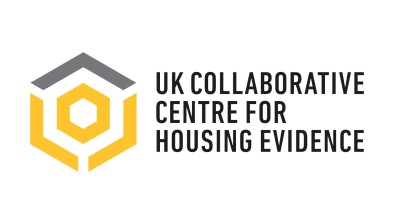Dr Jenny Preece: Animating leaseholders’ stories from the building safety crisis
Dr Jenny Preece, a research associate at the UK Collaborative Centre for Housing Evidence, outlines the approach to producing a new animation which highlights the experiences of those living through the building safety crisis and the impact that it has had on their everyday life.
This week we are launching a new animation from our research project, which explored leaseholders’ experiences of living through the building safety crisis. The building safety crisis or ‘cladding scandal’ refers to a range of problems identified in new and refurbished low-, mid- and high-rise buildings for multiple occupancy. Following the Grenfell Tower fire in 2017, leaseholders have been trapped by a range of building safety problems, including flammable cladding systems, insulation, balcony design, missing fire breaks, and inadequate compartmentation. Many leaseholders are unable to sell their homes until these problems can be investigated and rectified, and so are unable to move for the foreseeable future.
After obtaining funding from Research England through the University of Sheffield, we worked with a group of leaseholders to design a series of briefings about the research, and an animation telling the stories of participants. I worked with the research data to write the script, bringing together composite ‘characters’ who could tell different stories about their experiences of living through building safety problems and the impact on their day-to-day lives. The narratives featured therefore represent a number of leaseholders, but the words are their own.
I started planning the animation with a small group of leaseholders by thinking about the message that we wanted to tell, and the tone or feel that we wanted to get across. Our guiding principle was for characters to be relatable, and to generate the sense that if this crisis could happen to them, it could happen to any one of us. We discussed some images that could bring the narratives to life and used these to work up a script and a brief for an animation.
Fettle animation were commissioned to bring the animation to life. They gave feedback on the script but were sensitive to the need to feature the real words of leaseholders in telling the different stories. They presented some initial images and a storyboard outlining what would be happening at each point in the script. We gave some feedback on this, but the final product is actually relatively similar to that first iteration.
When the voice over actors had completed their work, we could hear the stories for the first time. As a researcher this is a strange experience because you are moving away from the people you came to know through the research to a new amalgamated character. Whilst this means that the characteristics of the new person do not necessarily match all of the characteristics of the original participants, I kept in mind that the purpose of the animation was to tell real stories in a new way and to explain the impact of the crisis succinctly for the general public. It is about finding the best way to convey the meaning and feel of the crisis for leaseholders, but within a very short space of time. This inevitably means being selective about the stories that you tell, and not being able to include all the details that make up someone’s experience.
I was really excited to see the stories being told in a new way, and I hope that this will be another avenue through which we can highlight the challenges that leaseholders are facing as they continue to navigate this crisis.









